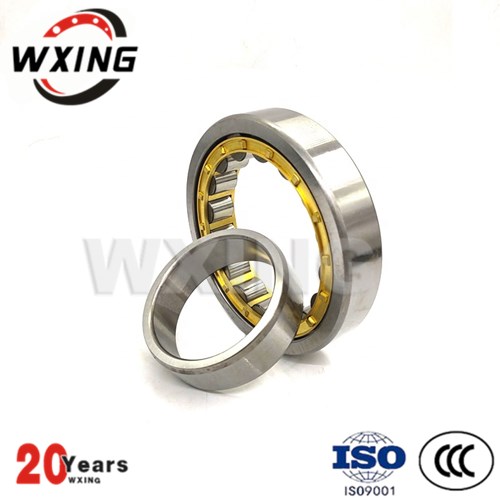CONTACT US
Zhejiang waxing electromechanical co.LTD.,Factory located in Shandong,Headquarters located in Zhejiang,China.
 1. High carbon chromium bearing steel
1. High carbon chromium bearing steel
The countries of the world are equivalent to GCr15 gang as the basis of bearing steel, to improve the hardenability of the direction of development to meet the needs of thick-wall bearing parts, its practice is in the composition of the appropriate increase in the molybdenum mass fraction (0.1%, 0.2%,...0.6%), the mass fraction of chromium slightly adjusted or unchanged, so as to develop a series of high hardenability of high carbon chromium bearing steel.These steels are not only suitable for martensite quenching, but also for bainite quenching of thick-walled bearing parts.
Another development of high carbon chromium bearing steel is to appropriately reduce the hardenability, and impose intermediate frequency induction heating, by the hardenability is limited and the overall quenching only the surface hardening.It not only has the superior performance of the carburizing and quenching of the carbon steel, but also saves the cost of the steel and the high cost of the carburizing heat treatment of the alloy carbon steel.Good results were obtained from the manufacture of railway bearings with this steel.
2. Chrome-free bearing steel
Chromium-free bearing steel is a new type of steel developed by China to replace chromium bearing steel according to the characteristics of domestic resources, including GSiMnV, GSiMnMoV, GSiMnMoV, GSiMnMoVR, GMnMoV and GMnMoVR.They have better hardenability, hardenability, resistance to contact fatigue and wear resistance.Compared with the chromium bearing steel, the surface decarbonization sensitivity is higher, the corrosion inhibition performance and the mechanical processing performance are lower, but it is completely feasible to use this kind of steel instead of the chromium bearing steel to produce bearings.
3. Carbon bearing steel
Foreign academic circles of bearing steel believe that the main function of alloy elements in bearing steel is to improve the hardenability, high strength, high hardness, wear resistance, fatigue resistance and other major properties are the role of carbon element.With the development of vacuum degassing technology today, the purity of carbon steel can also be greatly improved, for the bearing with a small wall thickness using high carbon steel degassing vacuum, its performance can fully meet the requirements.At present, there is a trend to further expand the use range of carbon steel.
4. Carburized bearing steel
With the development of high speed aeroengine, the fracture toughness of all hardened steel can not meet the requirement.For this reason, high temperature resistant carburized bearing steel M50NiL was developed in the United States, which has excellent fracture toughness, high temperature performance, high speed performance, impact toughness, abrasion resistance and fatigue resistance.At present, M50NiL carburized steel is studied.
5. Stainless bearing steel
Large carbides are harmful in 9Gr18 stainless steel. Foreign research has been devoted to reduce the carbon mass fraction to 0.5 ~ 0.7, which improves the comprehensive performance of 9Gr18 steel.At present, some countries are putting more efforts into the research of nitrogen - containing stainless steel.The United States and Germany jointly developed a Cronidur30 nitrogen stainless bearing steel, Germany studied a low nitrogen steel LNS for aircraft engines and aerospace bearings, France developed a XD15N high nitrogen marstenitic stainless steel for aerospace bearings, the United States developed a high-performance carburized stainless steel css-42l, also successfully used in aerospace bearings.
6. Ceramic materials
The ceramic materials used in bearing are mainly Si3N4 and ZrO2 and their series of composite products.It has the advantages of low density, small friction factor, especially high hardness, high temperature resistance, strong corrosion resistance, moderate impact resistance toughness, and high fatigue life under medium contact stress. Therefore, it is better to choose ceramic materials for bearings working under high temperature, high speed, corrosive medium and strong friction.At present, the types of ceramic bearings mainly include deep groove ball bearings, angular contact ball bearings and cylindrical roller bearings.From the use of ceramic materials are divided into two types: one is the steel inner and outer ring with ceramic rolling body, called composite;The other is ceramic for both the ring and the rolling body, called all-ceramic type.The difficulty in the application of all-ceramic bearing is that the fracture is caused by the different expansion coefficient of the material when the bearing is matched with the shaft.
Copyright © 2025 Zhejiang waxing electromechanical co.LTD. | All Rights Reserved Design
Hello, please leave your name email or WhatsApp here before chat online so that we won't miss your message and contact you smoothly.